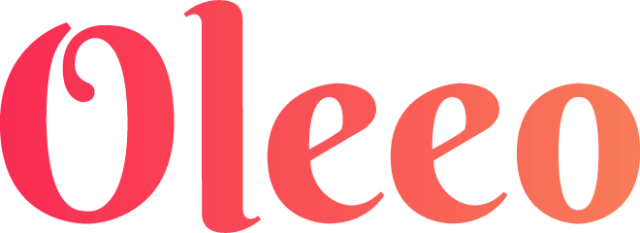How to Attract Diverse Talent in the NHS

As one of the largest employers in the UK, the NHS is always looking for new talent. Despite adding positions in the past year, Vacancy Rates Have Also Risen. Perhaps you’re working on NHS recruitment and looking at How to Promote Equality and Diversity in the Workplace. In that case, you may wonder how to attract diverse talent to fill these vacancies and continue offering healthcare to UK residents and visitors.
Here are some ways automation can enhance your NHS Diversity and Inclusion hiring practices.
Develop an Employer Brand That Showcases Your Diversity
The first thing to do when attracting more diverse talent to your NHS trust is ensure your employer brand is driven toward improving diversity in the NHS. Talk to your Employer Branding, HR and marketing team to ensure everyone is aligned on the strategy and the diversity of your trust is highlighted across your social channels, job descriptions and website so that candidates, researching positions, get a feel for what you are trying to achieve.
Write Job Descriptions Based on Needs Not Wants
Think about the requirements for the role you’re hiring for. Are they absolutely imperative, or is the list of requirements tuned into a wish list?
For example, when hiring nurses, you will need them to be qualified, but do you need them to have worked in a similar position for X number of years? Probably not.
A job description often doesn’t accurately reflect the day-to-day requirements of the role. Take time to speak to your staff to ensure your job descriptions accurately reflect what is required, and you’ll find this will reduce turnover later down the line too.
Make Your Vacancy Descriptions More Inclusive
To attract a diverse workforce, you need to consider DEI at every level of the recruitment and hiring process. In the recruitment stage, audit your job descriptions to remove potentially biased language. Research different job boards and events you can host to attract diverse job candidates.
Use a tool to evaluate and optimize your job descriptions, removing language that is overly masculine or feminine and replacing it with gender-neutral terminology. Look for other terms that may exclude people in typically marginalized groups. For example, research shows that using words like ‘strong’ ‘champion’ and ‘manpower’ are associated with social dominance and can dissuade men from applying for your role. By contrast, feminine words like ‘interpersonal’ ‘supportive’ and ‘committed’ are associated with ‘social cooperation’ and tend to appeal to all genders.
During the process, track your DEI efforts and data to refine the process further in the future. 86% of Job Seekers say they factor an employer’s reputation on DEI in their job search, including those applying for positions in the NHS.
Blind Screen Candidates to Remove Bias
Research shows that if a recruiter sees the name “Mohammed” on a job application, it reduces that candidate’s chances of being invited to interview. Some recruitment software can remove all identifiable characteristics from a resume or application, such as name, age, gender, nationality, and more. This enables recruiters to focus on screening individuals solely based on skills and experience.
Use AI to Sift Through Applications
Unconscious bias can be a difficult challenge to combat. As it’s unconscious, the person won’t know they’re being biased. Training your team on how to try and not only pinpoint when they may be biased is a great place to start, but what if we told you that you could quickly, and easily, remove bias completely?
Leveraging AI to rank applicants based on their skills will save you time by removing the need to assess each application individually it will also ensure candidates who are the best match for your role, based on their skill set, are flagged for interview.
It also eliminates the halo effect. The ‘halo effect’ describes how people perceive others in a positive light based on their first impression or interaction.
E.g. suppose a candidate were to answer the first of five questions very well. In that case, the recruitment manager will be biased toward thinking the entire application is great based on their first answer and will paint them favorably.

Remove Bias at the Interview Stage
Once you’ve identified a diverse range of quality candidates, you need to interview them to move them through the next stage of your pipeline. Interviewing also comes with DEI blocks, including unconscious biases.
You can take the following steps to alleviate them:
-
Have a diverse interview panel
-
Assess interviewees based on their skills and essential criteria
-
Structure each interview the same way and ask the same questions
Create a diversity-focused candidate experience, starting with your career site.
If you want to attract and hire underrepresented candidates, your career site should reflect that. A good recruitment marketing platform will allow you to publish targeted sub-pages, also known as microsites, on your main career page. These microsites can showcase your commitment to a diverse workforce and provide compelling, relevant content to various candidates. For example, you can highlight various affinity groups within your company, including those focused on ethnic, gender, and social initiatives.
Utilize Talent Pools
It’s likely throughout your NHS recruitment process and hundreds to thousands of hires, that you will engage with many great, diverse candidates that perhaps didn’t get the role they applied for. Build a database of these candidates to target them with other new opportunities. If you use a great Recruitment CRM, you should be able to easily and effectively target different demographic groups from within that talent pool, ensuring that you have a great range of diverse candidates for any specific role.
Carry DE&I Efforts Into Hiring
You can use DE&I efforts in recruiting and interviewing, but they mean nothing if the hiring managers don’t share this commitment. To take a more inclusive approach to hiring, use data to make your decisions. Don’t base a job offer on a gut feeling. Instead, evaluate each candidate’s application and interviews based on solid data. Conduct fair reference checks on every finalist.

Keep Assessing Your DEI Efforts Post-Hire
Continuous recruitment efforts are essential in the NHS, given the perpetual influx of vacancies and high turnover rates. Regularly assess your recruiting strategies and performance to gauge effectiveness. Analyze your reports to set Diversity Recruiting goals and ensure progress. Tracking NHS equality and diversity efforts is key to enhancing the recruitment process for future vacancies.
For guidance on goal-setting, explore Oleeo’s Diversity Recruiting Platforms. Employing various recruitment tools, automating processes, and prioritizing DE&I commitments facilitate enhancing your NHS Diverse Recruitment strategy to meet growing demands.
Discover how Oleeo can assist in attracting diverse talent to your NHS Trust.




